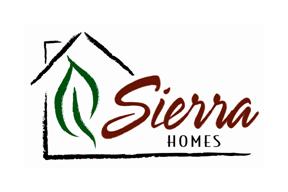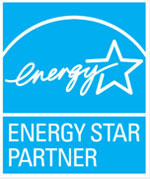At Sierra Homes, we combine sustainable products and practices with outstanding customer service. From start to finish, our goal is an efficient and durable home that provides comfortable and healthy living.
Sierra Homes takes everyday building challenges and turns them into structurally sound homes that maximize energy efficiency. The Texas Hill Country can be a brutal living environment going from 105 degrees in the summer down to 10 in the winter. Homeowners may find green benefits from something as simple as the orientation of a house. Sometimes a client will pick the worst orientation on the lot because they’ve got the view in mind. If we have a poor-facing west wall, we need to do something about the design to minimize the hot summer sun beating down on that side of the house. We talk about roof pitches, awnings, deep porches. We look at doors and windows and orientations and sizes. We’re trying to minimize the amount of surface area that’s gonna get scorched.
General Info Links
Hill Country Alliance
Building America Solution Center
Green Building Advisor Green Basics
Green Building Advisor Glossary
Building Science Corporation
Product Links
Marvin Windows and Doors Energy Efficiency
Lennox Buyers Guide To HVAC
Panasonic HVAC Home Ventilation Solutions
DuPont Building Envelope Systems
Rheem Residential Electric Water Heaters
Acer Home Water Tanks
Hill Country Rainwater Harvest.pdf
Hill Country Ground Water Supply.pdf
Hill Country Water Resource Myths and Truths.pdf
Termimesh Home Termite Solutions
Dow Energy Efficient Building Solutions
Demilec Spray Foam Insulation
R-Control Home Structural Insulated Panels
Water Sense EPA Program
Mitsubishi Cooling and Heating Comfort Solutions
A
ACH: Air Changes per Hour. This is a metric of house air tightness. ACH is often expressed as ACH50, which is the air changes per hour when the house is depressurized to -50 pascals during a blower door test.
Advanced Framing: House-framing techniques in which lumber use is optimized, saving material and improving the energy performance of the building envelope.
Air Sealing: The use of tapes, gaskets, caulks, and foams to seal the seams of a variety of membranes and buildings products, including housewrap, polyethylene, OSB, and plywood. These products are also used to seal duct seams, to seal leaks around penetrations through air barriers — for example, to seal around plumbing vents — and to seal sheet goods to a variety of materials, including concrete.
Air Barrier: Building assembly components that work as a system to restrict air flow through the building envelope. Air barriers may or may not act as a vapor barrier. The air barrier can be on the exterior, the interior of the assembly, or both.
B
Balanced Ventilation: Mechanical ventilation system in which separate, balanced fans exhaust stale indoor air and bring in fresh outdoor air in equal amounts; often includes heat recovery or heat and moisture recovery (see also ERV - energy-recovery ventilator). http://business.panasonic.com/solutions-hvacsolutions-ventilationforthehomeowner?sc_sp=business-category_featuresAd_products-hvac-ventilationproducts_Ventilation%20For%20The%20Homeowner
Batt Insulation: Insulation, usually of fiberglass or mineral wool and often faced with paper, typically installed between studs in walls and between joists in ceiling cavities. Correct installation is crucial to performance.
Blown-in Insulation: Typically fiberglass or cellulose insulation fibers that are loose. When insulation fibers are blown in place, the insulation fills all the voids of the framing bay where it is installed. Typical wall and ceiling cavities aren't uniform in size, and they can include electrical boxes, wiring, plumbing vents, and blocking. Because of these variations, it's hard to get batt insulation to conform to all the voids in a stud or joist bay. In contrast, blown-in insulation provides better performance than batts by filling odd-shaped cavities completely.
C
Capillary: Forces that lift water or pull it through porous materials, such as concrete. The tendency of a material to wick water due to the surface tension of the water molecules.
Climate Zones: A geographical region based on similar temperature and moisture criteria.
Drainage Plane: Path that water would take over the building envelope. Concealed drainage-plane materials, such as building paper or housewrap, are designed to shed water that penetrates the building’s cladding. Drainage planes are installed to overlap in shingle fashion (weatherlap) so that water flows downward and away from the building envelope.
D
Double Stud Walls: Construction system in which two layers of studs are used to provide a thicker-than-normal wall system so that more insulation can be installed; the two walls are often separated by several inches to reduce thermal bridging through the studs.
Daylighting: Use of sunlight for daytime lighting needs. Daylighting strategies include solar orientation of windows as well as the use of skylights, clerestory windows, solar tubes, reflective surfaces, and interior glazing to allow natural light to move through a structure, reducing the reliance on electricity.
E
EF: Energy Factor. An efficiency measure for rating the energy performance of dishwashers, clothes washers, water heaters, and certain other appliances. The higher the energy factor, the greater the efficiency. In some appliances EF reflects the percentage of energy going into the appliance that is turned into useful energy. http://www.rheem.com/product/residential-electric-water-heaters-marathon
ERV: Energy Recovery Ventilator. The part of a balanced ventilation system that captures water vapor and heat from one airstream to condition another. In cold climates, water vapor captured from the outgoing airstream by ERVs can humidify incoming air. In hot-humid climates, ERVs can help maintain (but not reduce) the interior relative humidity as outside air is conditioned by the ERV.
F
Fenestration: Any transparent or translucent material plus any sash, frame, mullion, or divider attached to it, including windows, skylights, glass doors, and curtain walls.
G
Geothermal Energy: Hot water or steam extracted from reservoirs beneath the Earth's surface; can be used for heat pumps, water heating, or electricity generation. The term may also mean the use of near-constant underground temperatures by ground-source heat pumps to provide heating and cooling.
H
HERS: Index or scoring system for energy efficiency established by the Residential Energy Services Network (RESNET) that compares a given home to a Home Energy Rating System (HERS) Reference Home based on the 2006 International Energy Conservation Code. A home matching the reference home has a HERS Index of 100. The lower a home’s HERS Index, the more energy efficient it is. A typical existing home has a HERS Index of 130; a net zero energy home has a HERS Index of 0.
Hot Water Recirculation: System to quickly deliver hot water to a bathroom or kitchen when needed, without wasting the water that has been sitting in the hot-water pipes, which circulates back to the water heater.
HVAC: equipment, distribution systems, and terminals that provide the processes of heating, ventilating, or air-conditioning http://www.lennox.com/buyers-guide/guide-to-hvac/glossary
I
IAQ: Indoor Air Quality. The nature of air inside the space that affects the health and well-being of building occupants. IAQ is affected by such factors as moisture and mold, emissions of volatile organic compounds from paints and finishes, formaldehyde emissions from cabinets, and ventilation effectiveness.
ICF: Insulated Concrete Form. Hollow insulated forms, usually made from expanded polystyrene foam, used for building walls (foundation and above-ground); after stacking and stabilizing the forms, the aligned cores are filled with concrete, which provides the wall structure.
J
Jump Duct: Flexible duct that connects a room to a common space to balance pressure and to provide a pathway for return air in forced-air heating and cooling systems. Jump duct grilles are typically located in the ceiling.
L
LEED: Leadership in Energy and Environmental Design®. A third-party design and certification tool from the United States Green Building Council (USGBC) used to improve occupant well-being, environmental performance, and economic returns as the national benchmark for green buildings.
Low-E: Low-Emissivity coating. Very thin metallic coating on glass or plastic window glazing that permits most of the sun’s short-wave (light) radiation to enter, while blocking up to 90% of the long-wave (heat) radiation. Low-E coatings boost a window’s R-value and reduce its U-factor.
M
Make-up Air: The process of introducing outside air in order to provide balanced ventilation and reduce depressurization of building envelopes through the operation of HVAC equipment and exhaust appliances. Make-up air replaces exhausted air in equal volume.
MERV: Minimum Efficiency Reporting Value. A standard that rates the overall effectiveness of air filters. Higher value MERV rating equates to finer filtration, meaning fewer dust particles and other airborne contaminants can pass through the filter.
Mini-Split: Like large central HVAC systems, mini-splits have two main components: an outdoor compressor/condenser, and an indoor air-handling unit. The main advantages of mini-splits are their small size and flexibility for zoning or heating and cooling individual rooms. Each of the zones will have its own thermostat, so you only need to condition that space when it is occupied, saving energy and money. Mini-split systems are also often easier to install than other types of space conditioning systems. http://www.mitsubishicomfort.com
N
NGBS: National Green Building Standard. A design and scoring standard developed by the National Association of Homebuilders (NAHB), the International Code Council (ICC) and the American Society for Heating, Refrigerating and Air Conditioning Engineers (ASHRAE). The standard establishes criteria for rating the environmental impact of design and construction practices to achieve conformance with specified performance levels for green residential buildings.
P
PV: Photovoltaic. Photovoltaic cells convert sunlight into usable electricity. Synonym: solar power
R
R Value: Measure of resistance to heat flow; the higher the R-value, the lower the heat loss. The inverse of U-factor.
Radiant Barrier: A shiny panel or flexible membrane used to slow heat transfer.
Rainwater Harvesting: The collection and storage of precipitation from a catchment area, such as a roof. Harvested water can be utilitzed for both potable, whole-house use, or for non-potable landscaping.
http://acerwatertanks.com/pioneer-home-ranch/
http://www.hillcountryalliance.org/uploads/HCA/RainwaterIP.pdf
http://www.hillcountryalliance.org/uploads/HCA/GroundwaterIssue2.pdf
http://207.58.180.79/wp-content/uploads/2014/06/WaterResourceMythsIP.pdf
RESNET: Residential Energy Services Network. A third-party group that developed the HERS Index.
Rigid Foam Insulation: There are three main types of rigid foam insulation: expanded polystyrene (EPS), extruded polystyrene (XPS), and polyisocyanurate. Available in varying thicknesses, the key differences are R-value per inch, water resistance, compressive strength, permeability to water vapor, facings, and cost. Rigid foam insulation over wall or roof framing reduces thermal bridging, raises the R-value of the wall or roof assembly, and can eliminate or reduce air leaks. http://building.dow.com/en-us/energy-efficiency
S
SEER: Seasonal Energy Efficiency Ratio (SEER) is the total cooling output (in BTU) of an air conditioner or heat pump during its normal annual usage period divided by its total energy input (in Watt-hours) during the same period. The units of SEER are Btu/W·h. SEER measures how efficiently a residential central cooling system operates over an entire cooling season. The relationship between SEER and EER depends on location, because equipment performance varies with climate factors like air temperature and humidity. http://www.lennox.com/buyers-guide/guide-to-hvac/glossary
SHGC: Solar heat gain coefficient. The fraction of solar gain admitted through a window, expressed as a number between 0 and 1. http://www.marvin.com/plan/energy-efficiency?brands=integrity
Solar Orientation: The process of siting a building along the compass axis in order to maximize natural daylighting, passive solar winter heating and efficiency for photovoltaic panels. In the converse, optimum solar orientation with proper building design minimizes direct sunlight into the envelope, thereby reducing active solar heating.
Spray Foam Insulation: Dual polyurethane components mixed on site using special equipment. Heated hoses convey the components to a mixing gun that sprays the chemicals on the surfaces to be insulated. A reaction begins as soon as the chemicals are mixed. The liquid mixture foams, expands, and eventually hardens. Spray polyurethane foam (SPF) is better than any other type of insulation at reducing air leakage. With foamed-in-place insulation, it is relatively easy to fill wall and ceiling cavities completely. Closed-cell spray foam provides a higher R-value per inch than less expensive batt or blown-in insulation. http://www.demilec.com/Homeowners.aspx
SIP: Structural Insulated Panels. Building panel usually made of oriented strand board (OSB) skins surrounding a core of expanded polystyrene (EPS) foam insulation. SIPs can be erected very quickly with a crane to create an energy-efficient, sturdy home. http://www.r-control.com/homeowners/
Stack Effect: Also referred to as the chimney effect, this is one of three primary forces that drives air leakage in buildings. When warm air is in a column (such as a building), its buoyancy pulls colder air in low in buildings as the buoyant air exerts pressure to escape out the top. The pressure of stack effect is proportional to the height of the column of air and the temperature difference between the air in the column and ambient air. Stack effect is much stronger in cold climates during the heating season than in hot climates during the cooling season.
T
Termite Control Barrier: A unique physical termite barrier using a simple concept of woven stainless mesh to stop termites entering homes through concealed entry points. http://www.termimeshusa.com/informationForHomeOwners.cfm
Transfer Grills: Passive, non-ducted open voids between rooms, typically above a door, that minimize temperature and pressure differentials.
U
U Factor: Measure of the heat conducted through a given product or material—the number of British thermal units (BTUs) of heat that move through a square foot of the material in one hour for every 1 degree Fahrenheit difference in temperature across the material (BTU/ft2°F hr). U-factor is the inverse of R-value.
Universal Design: Universal design strives to make buildings easy for a wide variety of people to use, including older people and people with disabilities. As much as possible, universal design attempts to meet the needs of people of all ages, sizes, and abilities. A house that follows universal design principles often aims for “visitability” — including ease of use by friends in wheelchairs — and aims to accommodate owners planning an “aging in place” retirement. A house built to universal design principles should make it easy for the owners to live independently in their home for as long as possible.
Unvented Attic: An attic where the insulation plane is moved from the attic floor to the roof deck, creating a conditioned space equal to the occupied space below. Ideally, HVAC equipment and ductwork should be located inside a home’s conditioned envelope.
V
Vapor Diffusion: Movement of water vapor through a material; water vapor can diffuse through even solid materials if the permeability is high enough.
VOC: Volatile Organic Compound. A carbon compound that participates in atmospheric photochemical reactions, which vaporize at room temperature.
W
WaterSense: Program developed and administered by the U.S. Environmental Protection Agency (EPA) to promote and label water-efficient plumbing fixtures. https://www3.epa.gov/watersense/
Weather Resistive Barrier: Sometimes also called the water-resistive barrier, this layer of any wall assembly is the material interior to the wall cladding that forms a secondary drainage plane for liquid water that makes it past the cladding. This layer can be building paper, housewrap, or even a fluid-applied material.
X
Xeriscaping: A landscaping method that makes routine irrigation unnecessary by using drought-adaptable, native and low-water plants, as well as soil amendments to reduce evaporation.










